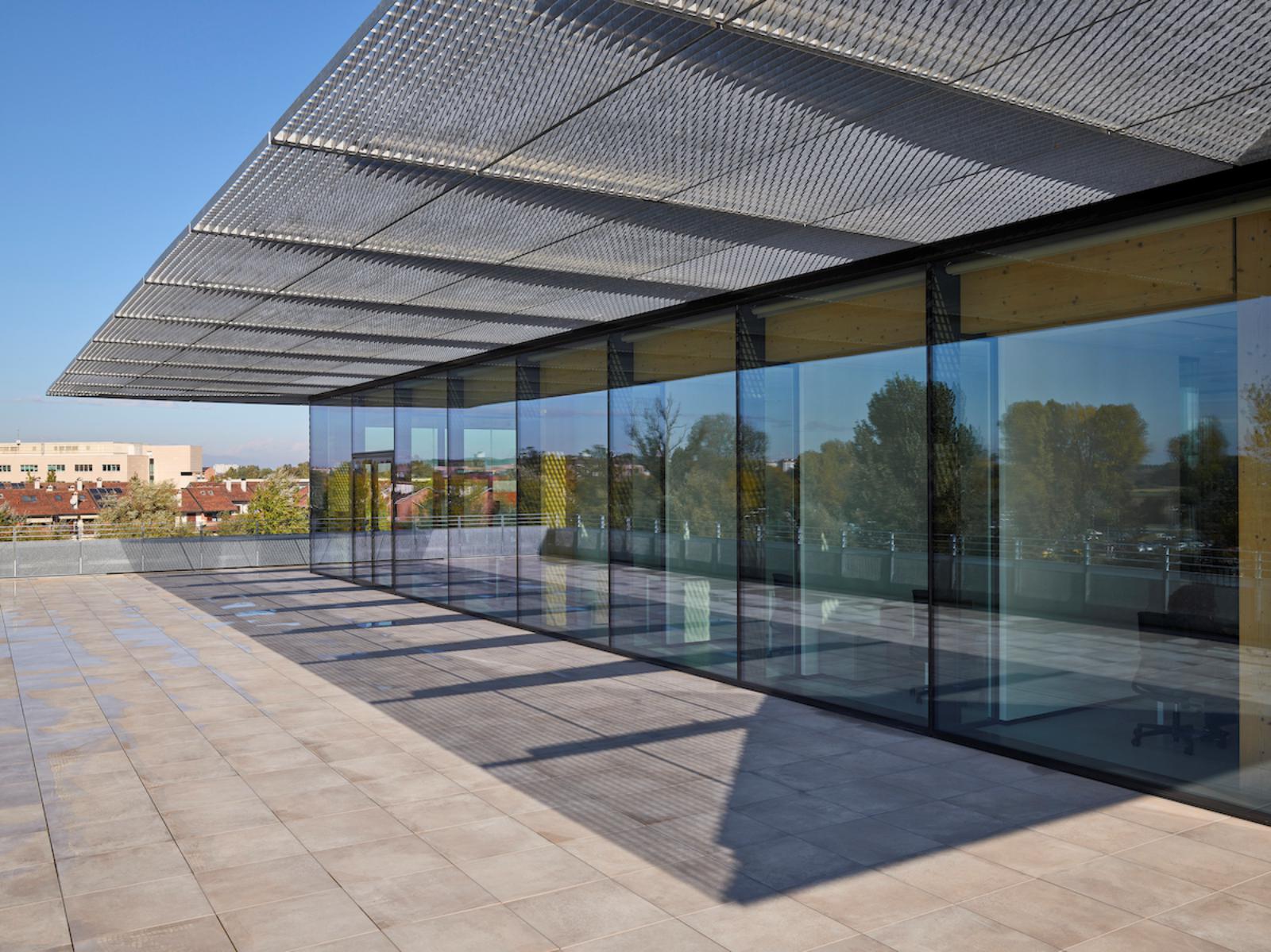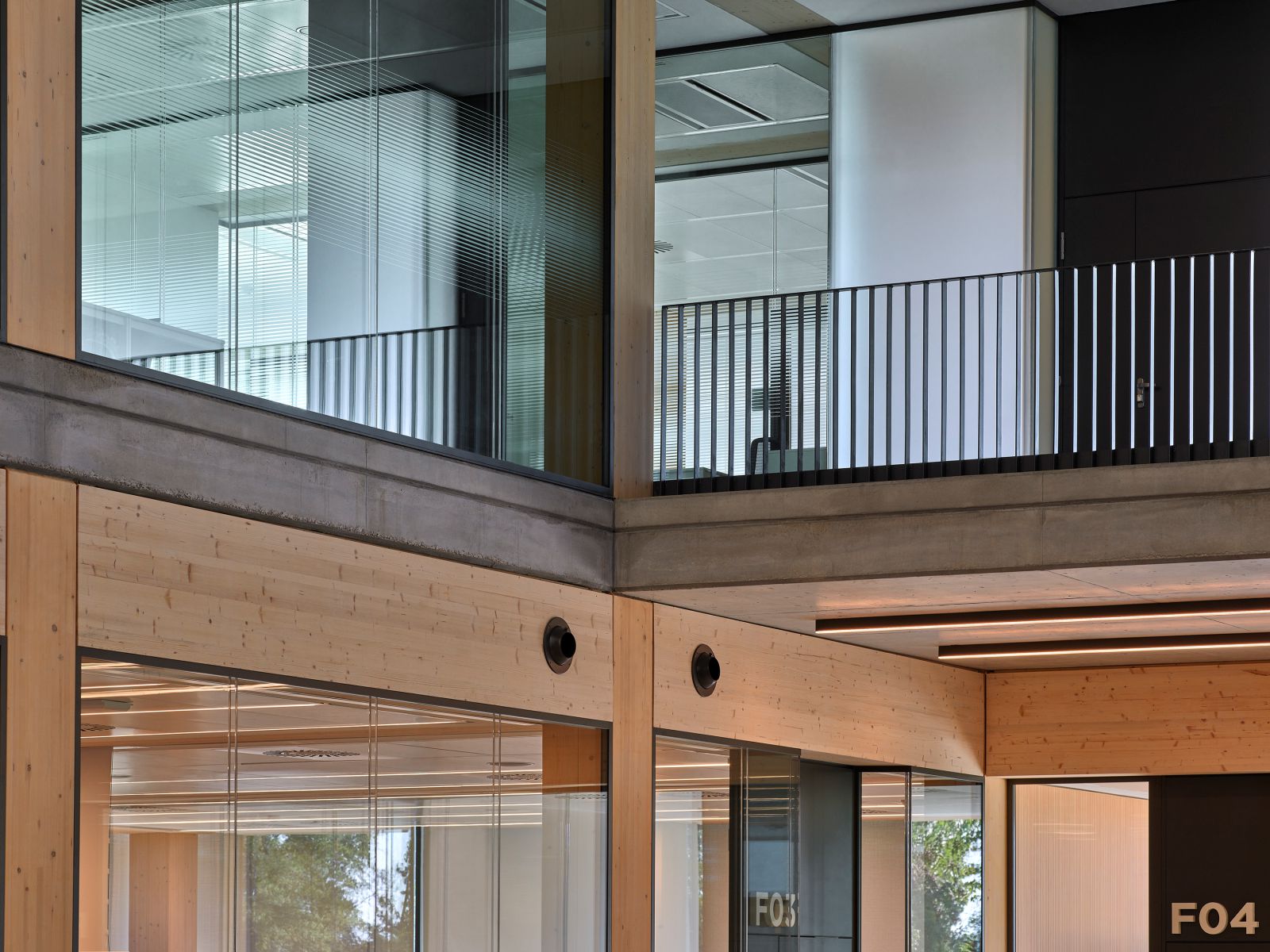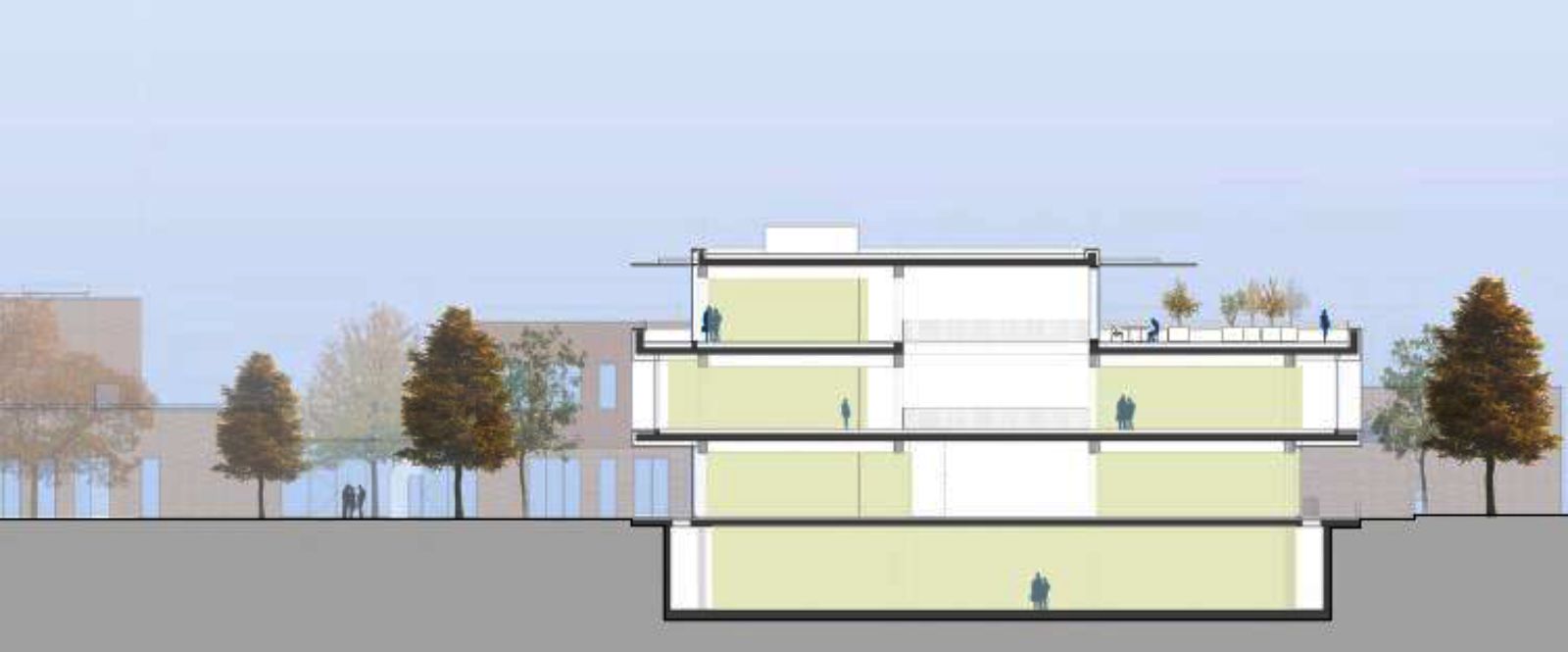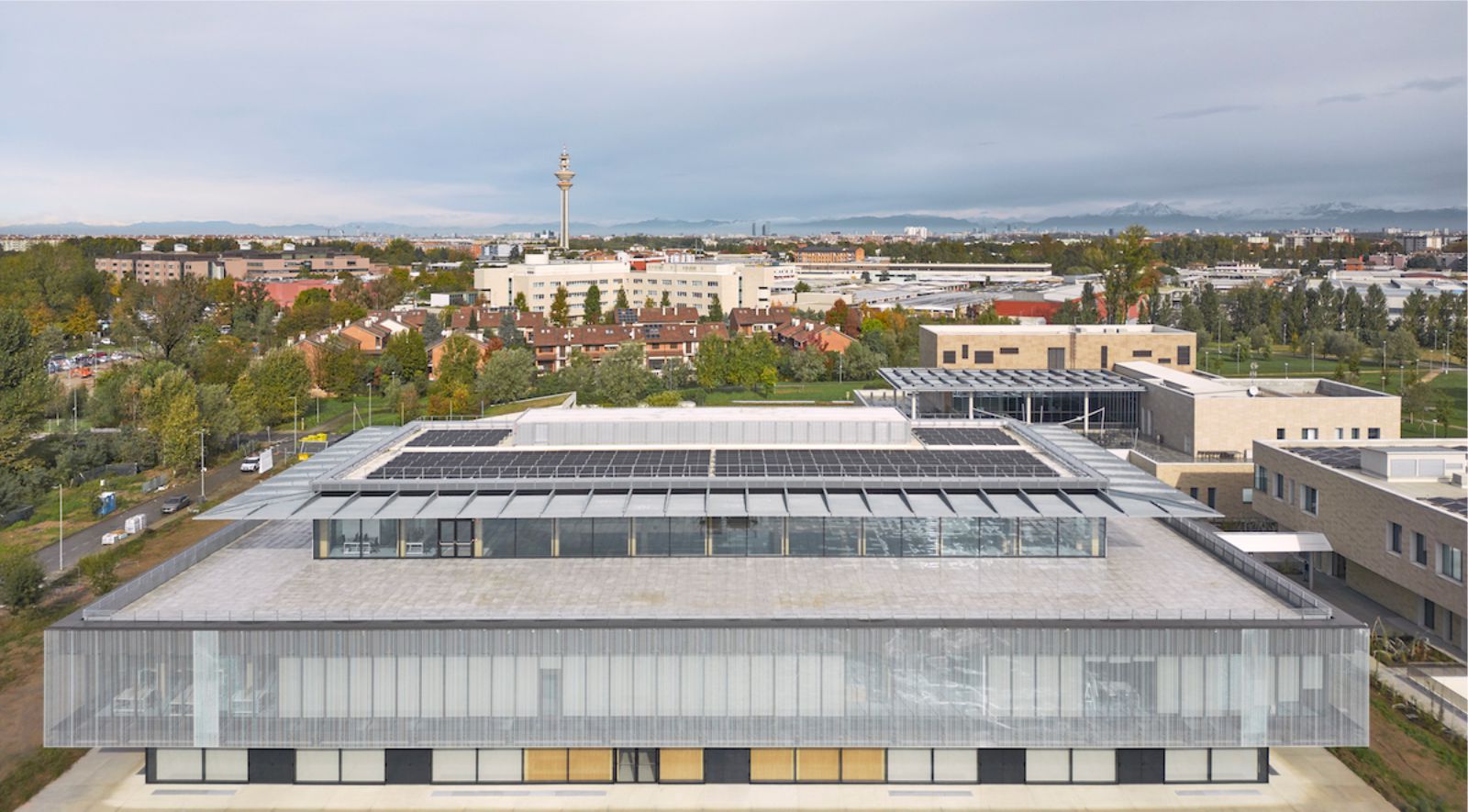The headquarters responds to the challenges proposed in envisioning and accommodating scientific education and research of the future. In collaboration between Humanitas University and the Politecnico di Milano, the headquarters of the new degree course in Medicine and Biomedical Engineering (MEDTEC School), located on the Humanitas University Campus just outside of Milan, is spread over 6,000 m2 and
distributed on three levels.
The Context
The Roberto Rocca Innovation Building is located in Pieve Emanuele, on the border of Milan’s southern agricultural area, within the Humanitas University Campus – also designed by Filippo Taidelli in 2017. Inside this complex of four energetically sustainable and cutting edge educational buildings, FTA envisaged a kind “knowledge factory,” structured around the needs of teachers and students. Here, state-of-the-art learning meets avant-garde research, with tools such as electron microscopy, 3D printing and artificial intelligence.
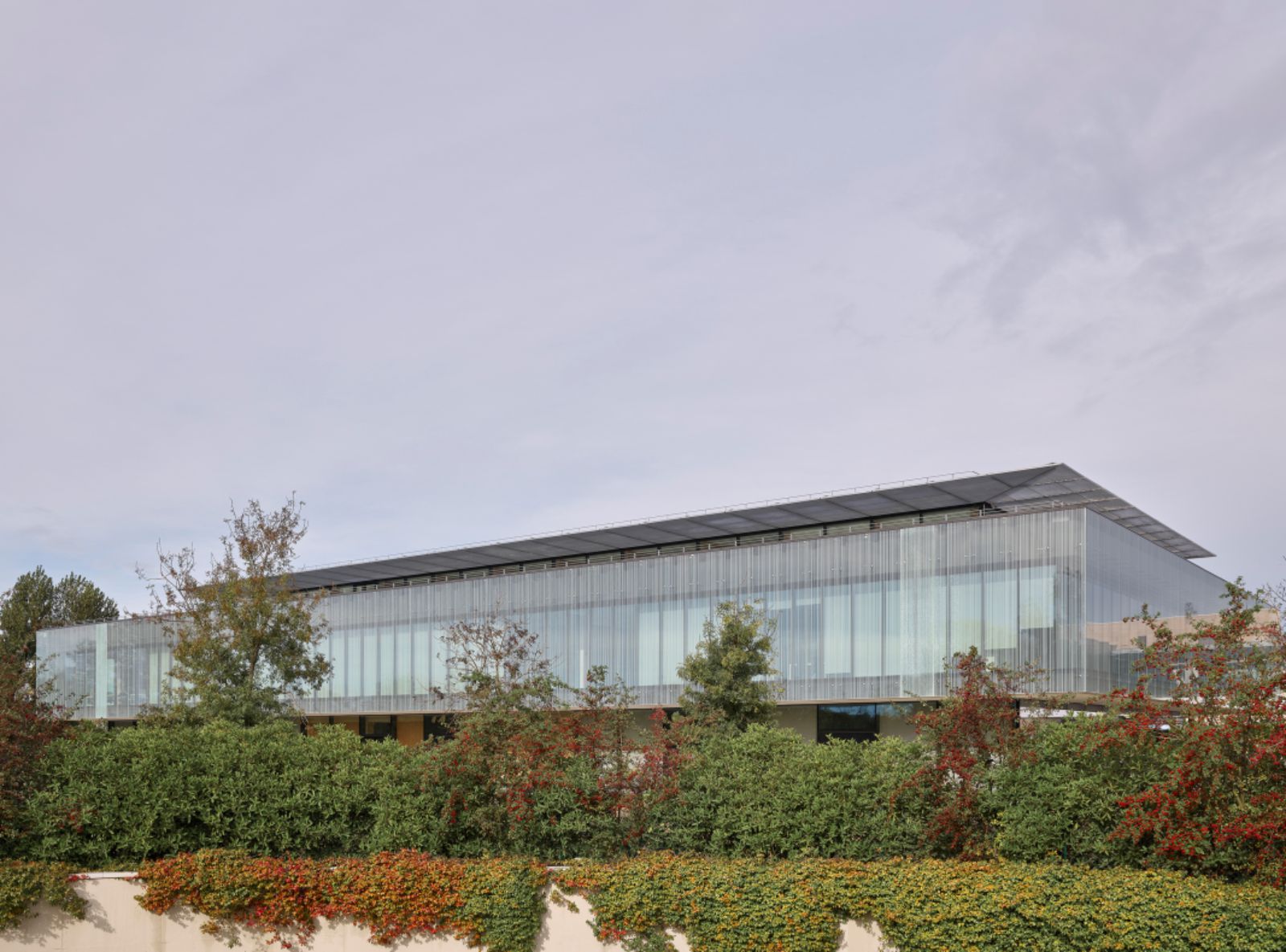
The Spaces
The central volume, a nave in laminated wood and exposed concrete floors, offers both strong narrative impact, as well as surprising versatility. Wood, glass and concrete engender an inviting, forward-looking environment, but also provide highly functional uses. Here, the transfer of knowledge germinates, while also creating a place that fosters relationships between people.
In this central volume, the viewpoint moves across a single-span volume, with the same sweeping force as the ideas of tomorrow’s researchers on the new frontiers of medicine. The Innovation Building is designed in physical and visual continuity with the campus’s existing structures, while presenting a formal language that is clearly disruptive. Here, there is playful tension with the existing compact and material volumes and the juxtaposition with a diaphanous, transparent body.
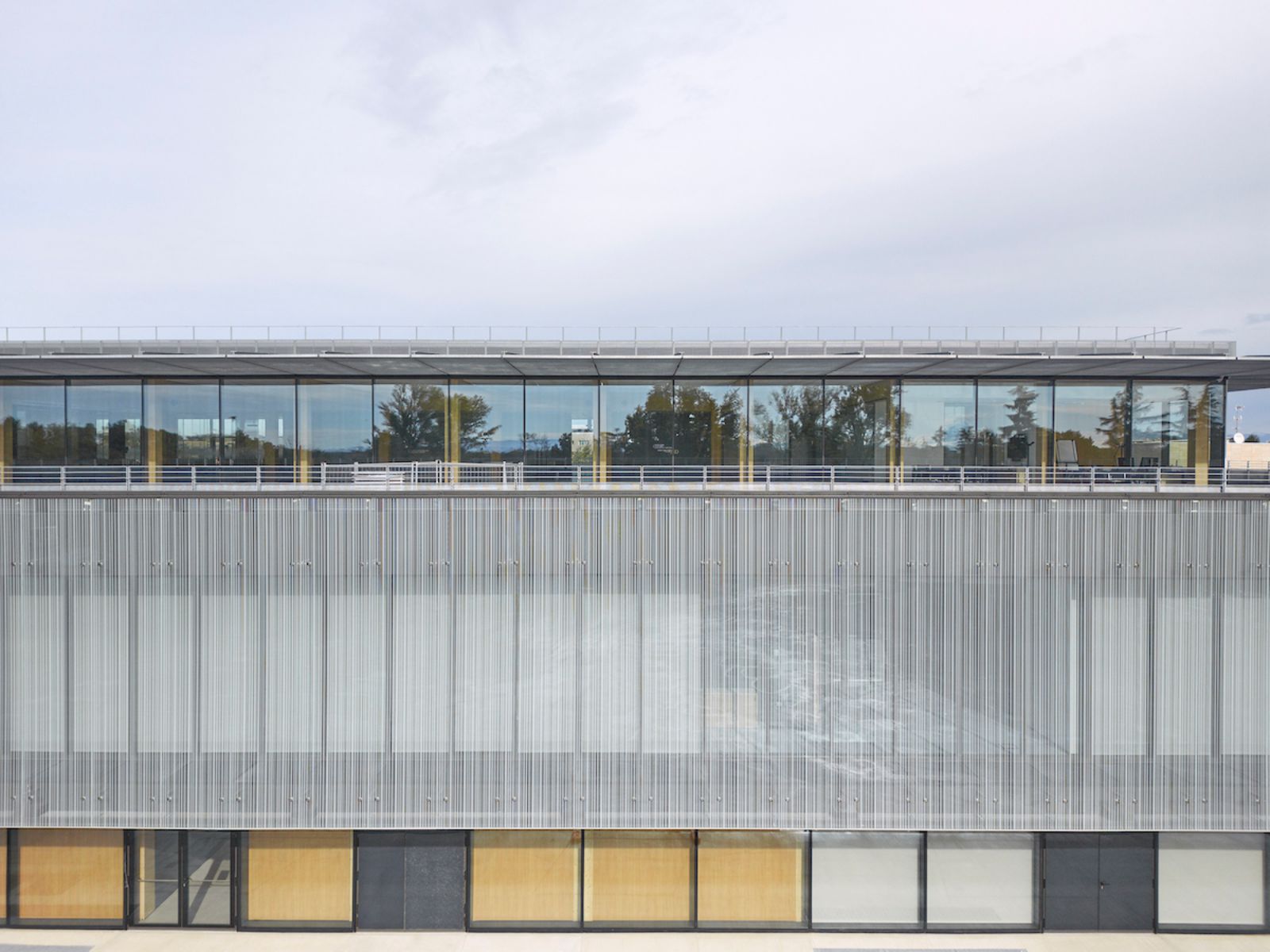
The building’s non-hierarchical spatial layout encourages dialogue and interdisciplinary exchange in order to welcome students, professors and employees as a single social community. The ground floor is conceived as an open environment, dedicated not only to students, but also to exchanges with external scientific realities. The atrium develops over a central, 500 m2, multifunctional nave – dominated by a staircase leading to the upper floor.
The perimeter is articulated by three, 200 m2 reconfigurable classrooms equipped with moveable furniture and walls, two Problem Based Learning (PBL) rooms, and a study hall. The first floor welcomes users in informal work spaces: the A.I Center (Humanitas’ Artificial Intelligence center) and advanced 3D printing laboratories. The second floor hosts managerial and administrative offices that overlook the greenery of the terrace. In the basement, in addition to the technical rooms, one finds precision optics laboratory and several service areas for students.

The concept
The Roberto Rocca Innovation Building’s transparent envelope, characterized by the double glass skin, generates a “light box”: a bioclimatic machine that guarantees the maximum supply of natural light and visual continuity with the external park while, on the interior, it unites the structure’s various functions. Aiming for a dynamic and flexible use of space, FTA transforms the traditional university layout (usually organized with perimeter classrooms overlooking a main corridor) into a fluid space punctuated by many informal environments.
FTA creates transparent, divisible and reconfigurable classrooms to create permeability between environments and foster a culture of knowledge sharing, while also implementing a design approach built around people. Here a person-centric vision dominates: visual continuity between the indoor activities and the surrounding greenery, natural finishings, the vertical distribution of the internal spaces that encourages physical movement, as well as the transparency of the envelope that maximizes natural light.
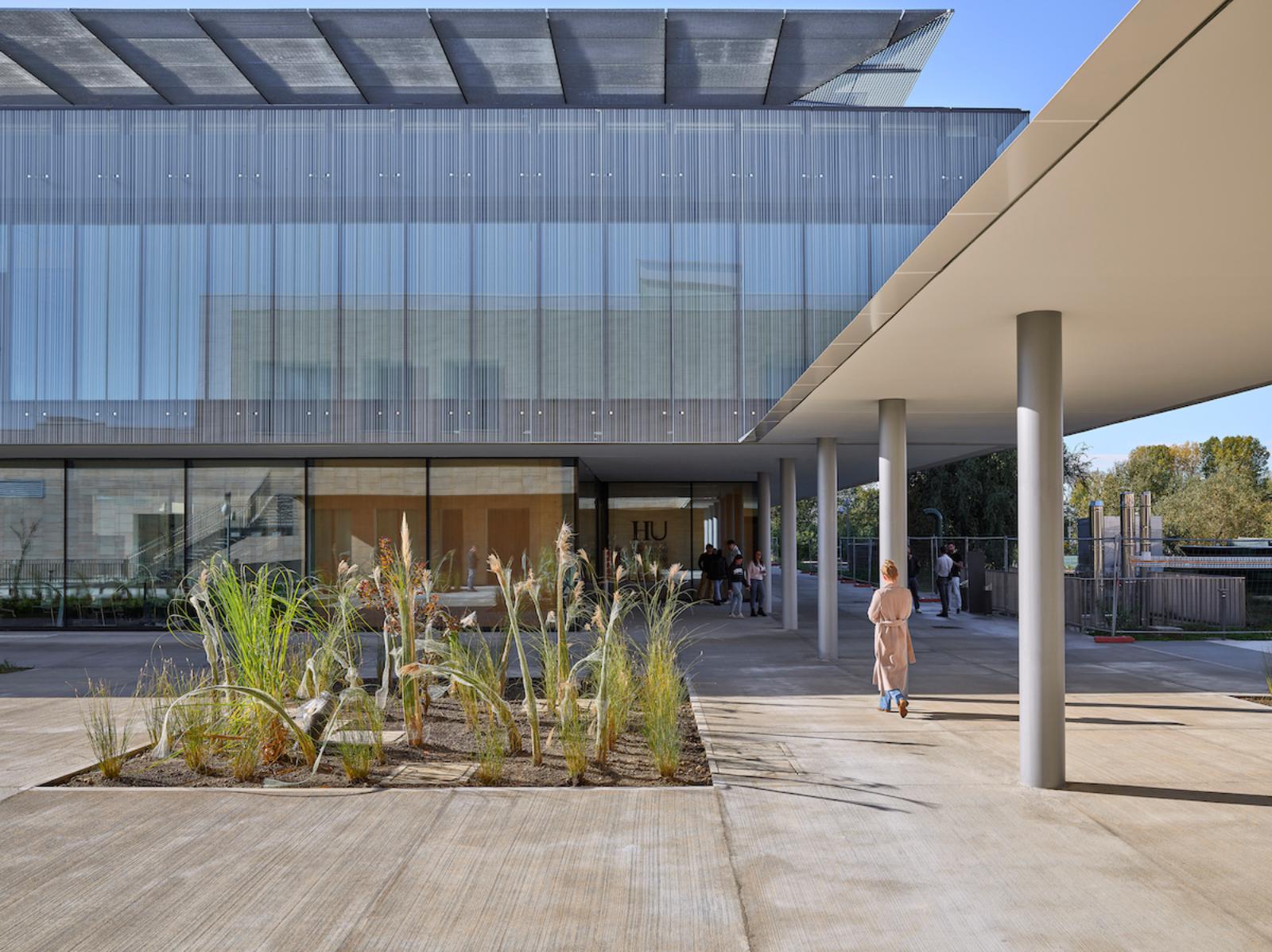
Wood: Innovative Material
Filippo Taidelli chooses wood as the building’s defining feature – an ancient, yet entirely modern and flexible material. Wood preserves expressiveness and warmth, as well as the characteristic mutability of an organic material. The wooden structure in an exposed beam-pillar system is utilized in combination with other materials such as reinforced concrete and glass. The Innovation Building’s genesis contemplated the entire production and assembly process in order to obtain the best balance between energetic sustainability, speed of implementation, and cost effectiveness.
Environmental sustainability and efficiency
FTA’s Innovation Building maximizes the level of well-being of users by following a conscious, sustainable approach. Advanced environmental strategies such as a ventilated double-skin façade, the application of photovoltaic panels on the roof, as well as the use of groundwater pumps, minimize the building’s energy consumption.

The envelope is designed to optimize the supply of light during the winter and avoid overheating or glare during the summer through a shading system with horizontal brise soleil on the top floor. The overhang on the first floor affords a total vista onto the exterior park, while also affording maximum natural light on the interior without glare phenomena. Construction represents a staggering 37% of global CO2 emissions.
Further energy-saving strategies are found in the building’s heating and cooling system, where a geothermal system for both winter and summer makes the Humanitas University Campus totally gas free. The recovery and use of rainwater and technological water (residue from geothermal systems) for toilets and irrigation allows for the conservation of water. In the building’s interior, LED lighting is adjustable according to external conditions and the actual presence of people, and FSC® certified furnishings and containers are utilized for separate waste collection.
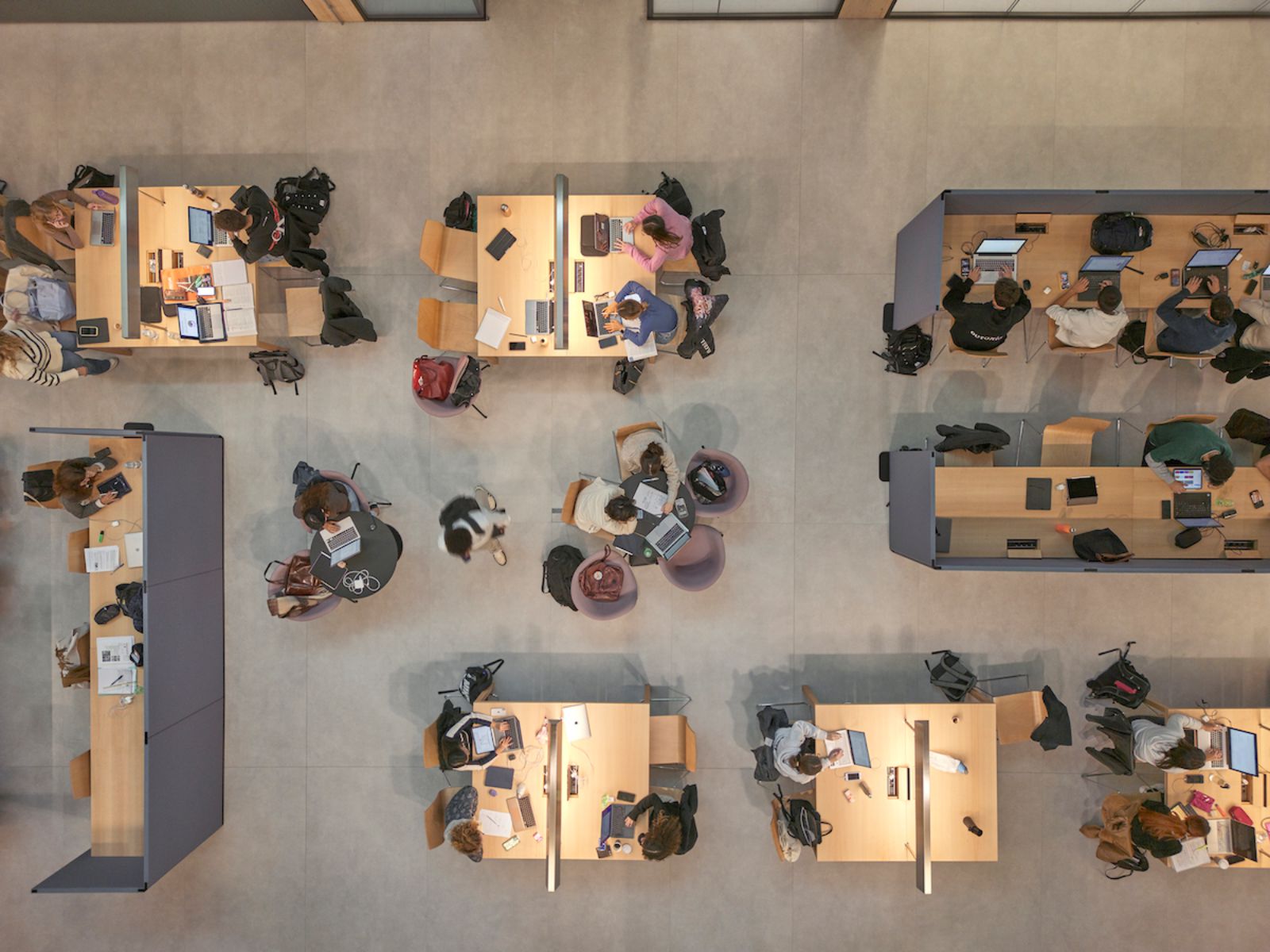
- Location: Pieve Emanuele, Milan, Italy
- Architect: Filippo Taidelli Architects FTA
- Design and Works Management: Techint Engineering & Construction Structure design: S.C.E.
- Facade design: Faces Engineering, Geom. Adriano Venir, Rigone Engineering Studio
- Lighting Designer: Rossi Bianchi Lighting Design
- Electrical and mechanical systems: Landi S.p.A.
- Facades: Coiver Cladding
- General contractor: Colombo Costruzioni S.r.l.
- Client: Pieve S.r.l.
- Year: 2023
- Photographs: Giovanni Hanninen, Courtesy of Filippo Taidelli Architects FTA
